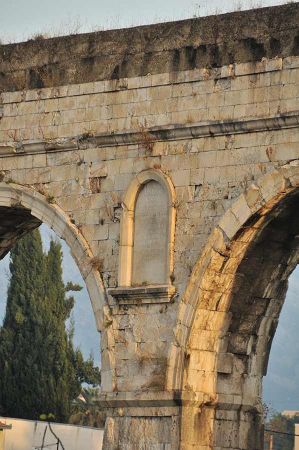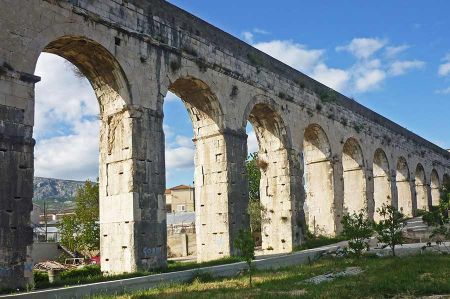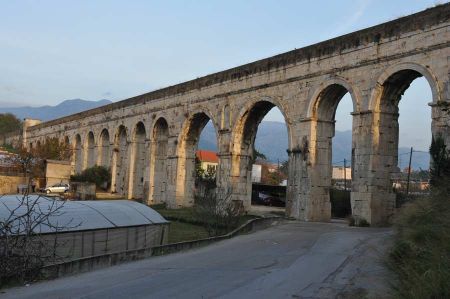The Diocletian's Aqueduct in Split
- Written by Portal Editor
During our visit to Diocletian's Palace in Split, Robert had already told us about the water supply shortages in the ancient city of Solin.
When Diocletian began planning his palace, which would also be his retirement home, this problem was to be avoided from the outset. It is known that the water consumption of the ancient Romans was about three times higher than today. Immense amounts of water were necessary to operate the palace and the thermal baths.
Viaduct to bridge a valley

To this day, parts of the aqueduct and the associated tunnels of this Roman water pipeline are still used to supply agricultural supplies to the modern city of Split. We took a closer look at the best-preserved section of this aqueduct during another short trip. Here in the town of Dujmovača there is a section of the water pipe as a viaduct bridging a valley in very good condition. At a height of 16.5 meters and a length of around 180 meters, the valley is overcome in the typical arch bridge construction.
Underground exhibition space in the hotel atrium

With the completion of the modern water station in Kopilica, the aqueduct for the public city supply of Split was abandoned.
Another section of Diocletian's Aqueduct can be seen as an underground exhibition space in the Hotel Atrium. Long stretches of the aqueduct's canals and bridges can still be explored today.
Please read as well:
Farma Sotira - practical Kitchenbox in use in Albania
Diocletian's Palace in Asphalatos, then Spalato and today Split
Salona - capital of the Roman province of Dalmatia
https://www.alaturka.info/en/croatia/split/6325-the-diocletian-s-aqueduct-in-split/amp#sigProIdfd2facc2b0
